Adopt a Species
You can support our research and conservation projects by adopting one of the Galapagos species.
At the Charles Darwin Foundation, our success hinges on the dedication and expertise of our remarkable team. Meet our team today.
View more Management team Board of Directors General Assembly CDF Ambassadors Directory Contact us Report a complaintJoin our team of professionals who are passionate about conserving this extraordinary archipelago. Check out our latest openings.
View job openings Volunteers Scholarships and grants Academic CollaborationsThe Charles Darwin Research Station is the largest and oldest field station in Galapagos, hosting visitors and scientists year-round.
Discover our campus Exhibition Hall Natural History Collections Public Library Conference CenterExplore the 65 year history of the Charles Darwin Foundation in the Galapagos Islands, leading science and conservation action.
Discover our history
Discover our work conserving key marine species in Galapagos and the Eastern Tropical Pacific.
View our Ocean Programs Deep-ocean exploration & conservation Mangrove Ecology and Climate Change Marine biodiversity research Marine bird conservation Ocean governance Sea turtle conservation Shark ecology and conservationExplore our efforts to safeguard and restore the Galapagos Islands' iconic land-based fauna and flora.
View our Land Programs Conservation of threatened plant species Control of the avian vampire fly Giant tortoise conservation Landbird conservation Restoration of Arid Zones Scalesia forest restorationUnderstand how our work is grounded in the benefits nature provides to the people of Galapagos.
View our people programs Education and Community Outreach Sustainable fisheries Sustainability for Conservation Urban and rural restoration
Make a lasting impact in Galapagos. Donate to support our mission and our work.
Donate Give monthly Adopt a speciesThere are a number of other ways you or your organization can contribute to our work.
A Night of 65 House Parties: 31 July 2025 Leave a legacy gift Become a corporate donor Fundraise for GalapagosThe impact you make in Galapagos is part of a larger footprint. Get involved today.
Meet our donors Become a CDF Ambassador Become a volunteer Send a free e-card! Sign up to our newsletter
Discover how our science and conservation programs are making a difference for the future of Galapagos.
View moreThe latest news releases from the Charles Darwin Foundation and its Research Station.
View moreExplore firsthand accounts from our researchers, staff, and collaborators in Galapagos.
View more
At the Charles Darwin Foundation, our success hinges on the dedication and expertise of our remarkable team. Meet our team today.
View more Management team Board of Directors General Assembly CDF Ambassadors Directory Contact us Report a complaintJoin our team of professionals who are passionate about conserving this extraordinary archipelago. Check out our latest openings.
View job openings Volunteers Scholarships and grants Academic CollaborationsThe Charles Darwin Research Station is the largest and oldest field station in Galapagos, hosting visitors and scientists year-round.
Discover our campus Exhibition Hall Natural History Collections Public Library Conference CenterExplore the 65 year history of the Charles Darwin Foundation in the Galapagos Islands, leading science and conservation action.
Discover our history
Discover our work conserving key marine species in Galapagos and the Eastern Tropical Pacific.
View our Ocean Programs Deep-ocean exploration & conservation Mangrove Ecology and Climate Change Marine biodiversity research Marine bird conservation Ocean governance Sea turtle conservation Shark ecology and conservationExplore our efforts to safeguard and restore the Galapagos Islands' iconic land-based fauna and flora.
View our Land Programs Conservation of threatened plant species Control of the avian vampire fly Giant tortoise conservation Landbird conservation Restoration of Arid Zones Scalesia forest restorationUnderstand how our work is grounded in the benefits nature provides to the people of Galapagos.
View our people programs Education and Community Outreach Sustainable fisheries Sustainability for Conservation Urban and rural restoration
Make a lasting impact in Galapagos. Donate to support our mission and our work.
Donate Give monthly Adopt a speciesThere are a number of other ways you or your organization can contribute to our work.
A Night of 65 House Parties: 31 July 2025 Leave a legacy gift Become a corporate donor Fundraise for GalapagosThe impact you make in Galapagos is part of a larger footprint. Get involved today.
Meet our donors Become a CDF Ambassador Become a volunteer Send a free e-card! Sign up to our newsletter
Discover how our science and conservation programs are making a difference for the future of Galapagos.
View moreThe latest news releases from the Charles Darwin Foundation and its Research Station.
View moreExplore firsthand accounts from our researchers, staff, and collaborators in Galapagos.
View more
At the Charles Darwin Foundation, our success hinges on the dedication and expertise of our remarkable team. Meet our team today.
View more Management team Board of Directors General Assembly CDF Ambassadors Directory Contact us Report a complaintJoin our team of professionals who are passionate about conserving this extraordinary archipelago. Check out our latest openings.
View job openings Volunteers Scholarships and grants Academic CollaborationsThe Charles Darwin Research Station is the largest and oldest field station in Galapagos, hosting visitors and scientists year-round.
Discover our campus Exhibition Hall Natural History Collections Public Library Conference CenterExplore the 65 year history of the Charles Darwin Foundation in the Galapagos Islands, leading science and conservation action.
Discover our history
Discover our work conserving key marine species in Galapagos and the Eastern Tropical Pacific.
View our Ocean Programs Deep-ocean exploration & conservation Mangrove Ecology and Climate Change Marine biodiversity research Marine bird conservation Ocean governance Sea turtle conservation Shark ecology and conservationExplore our efforts to safeguard and restore the Galapagos Islands' iconic land-based fauna and flora.
View our Land Programs Conservation of threatened plant species Control of the avian vampire fly Giant tortoise conservation Landbird conservation Restoration of Arid Zones Scalesia forest restorationUnderstand how our work is grounded in the benefits nature provides to the people of Galapagos.
View our people programs Education and Community Outreach Sustainable fisheries Sustainability for Conservation Urban and rural restoration
Make a lasting impact in Galapagos. Donate to support our mission and our work.
Donate Give monthly Adopt a speciesThere are a number of other ways you or your organization can contribute to our work.
A Night of 65 House Parties: 31 July 2025 Leave a legacy gift Become a corporate donor Fundraise for GalapagosThe impact you make in Galapagos is part of a larger footprint. Get involved today.
Meet our donors Become a CDF Ambassador Become a volunteer Send a free e-card! Sign up to our newsletter
Discover how our science and conservation programs are making a difference for the future of Galapagos.
View moreThe latest news releases from the Charles Darwin Foundation and its Research Station.
View moreExplore firsthand accounts from our researchers, staff, and collaborators in Galapagos.
View more
You can support our research and conservation projects by adopting one of the Galapagos species.
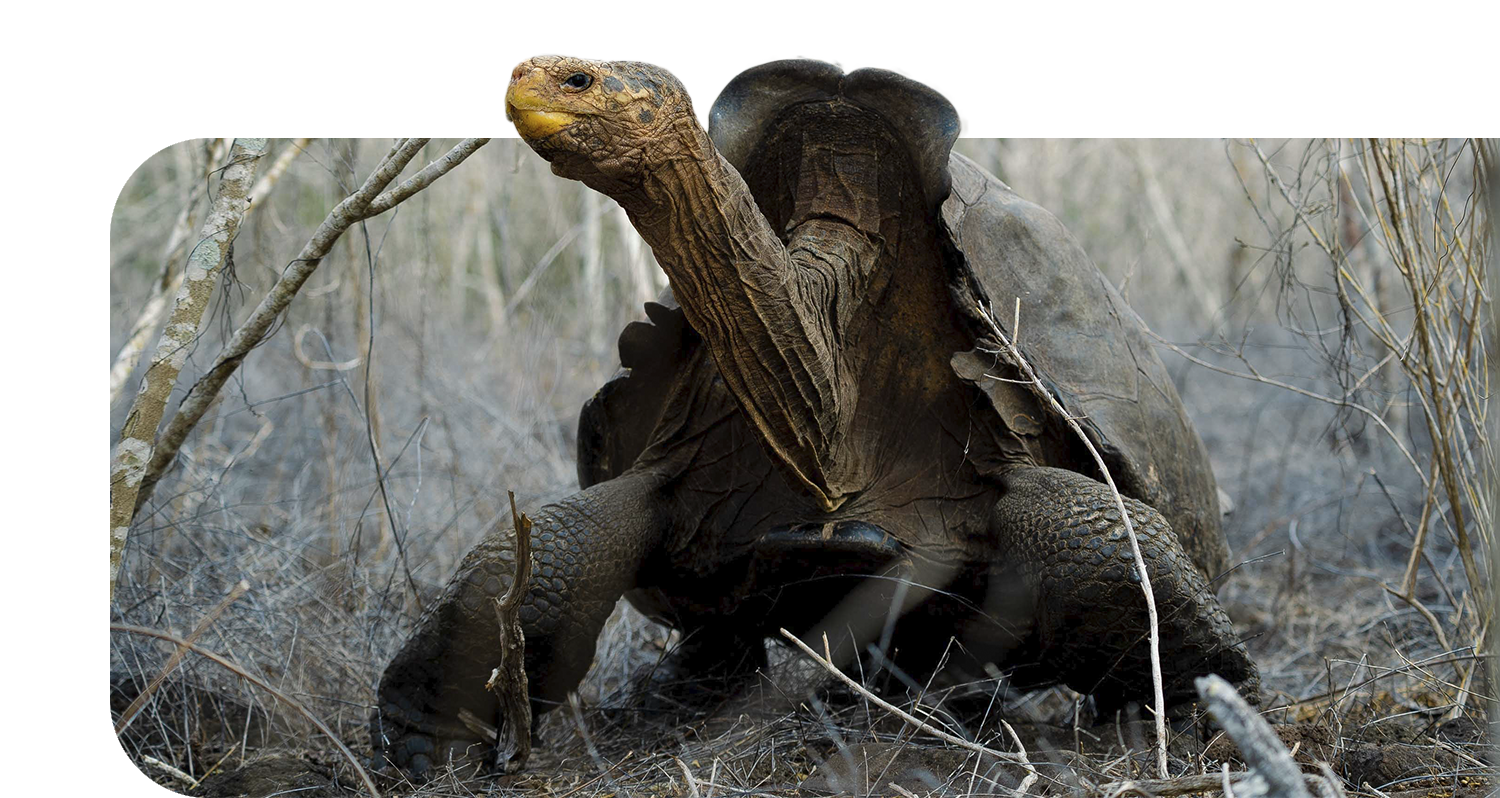
Arriving from mainland South America 2-3 million years ago, the most famous resident of the Galapagos Islands is the Galapagos giant tortoise. In fact, the islands were named after the giant tortoises’ saddle-shaped shells – galapágo is an old Spanish word for saddle. Today there are 12 species of giant tortoises left in the Galapagos Islands. Their population is currently estimated at between 30,000 and 35,000 individuals.
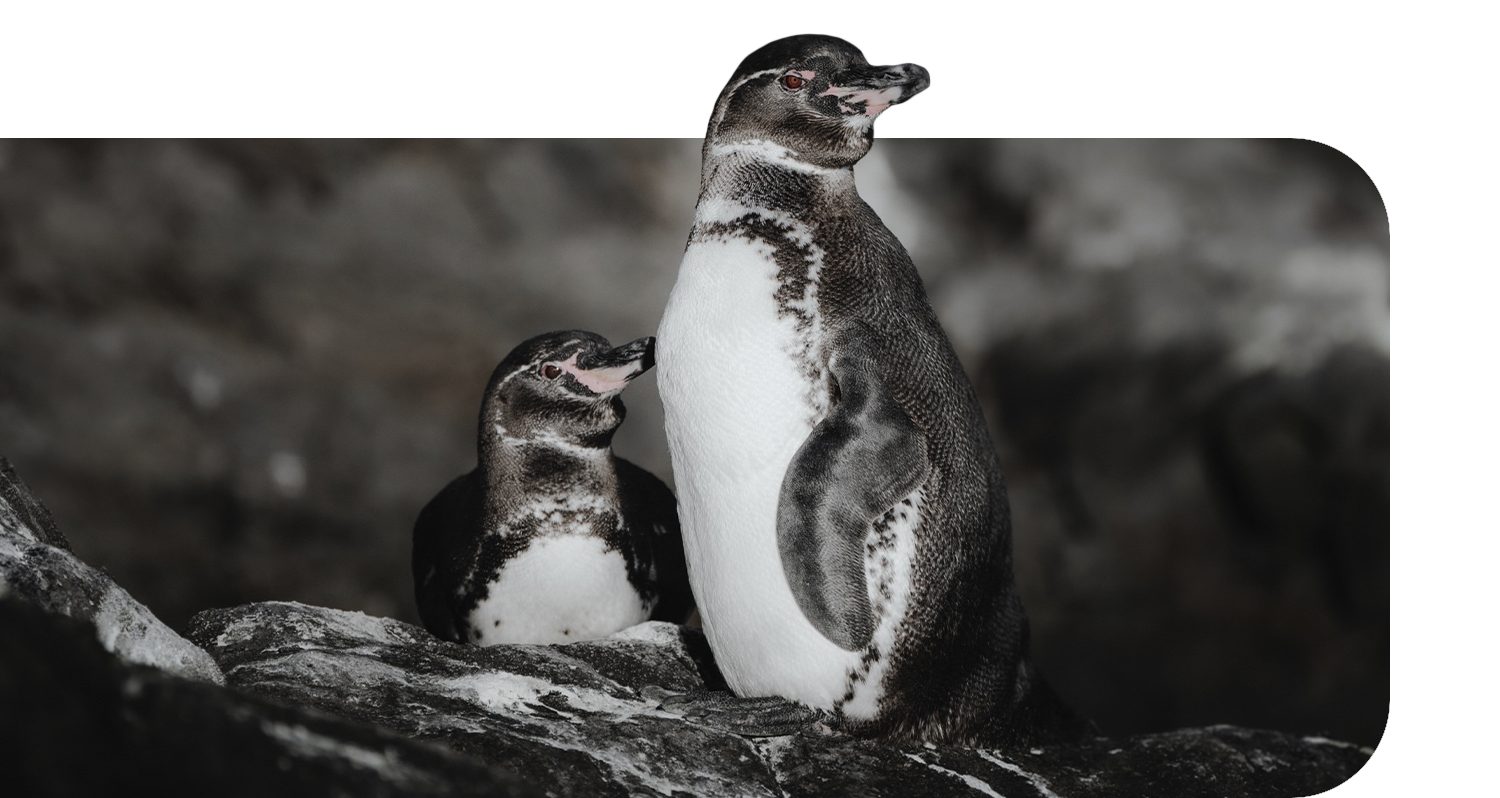
The Galapagos penguin is the second smallest penguin species in the world and is endemic to the Galapagos Archipelago, which means that it is found nowhere else in the world. It is also the only penguin species found in the Northern Hemisphere, with some colonies living on the northern tip of Isabela Island.
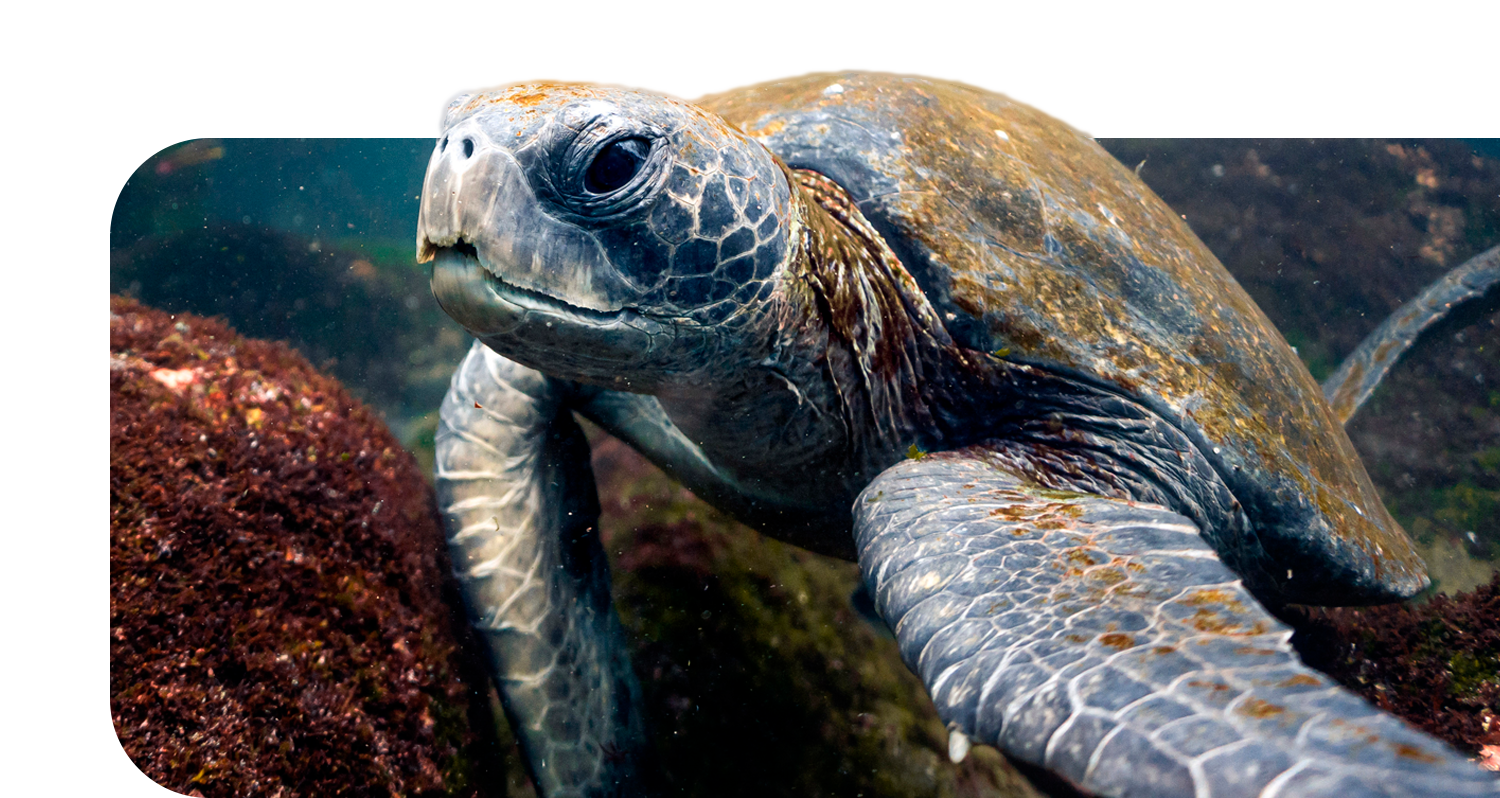
The green sea turtle is the only turtle species to nest in the Galapagos. The species is a frequent sighting on snorkeling and diving trips around the archipelago. It mainly stays near the coastline and around islands and is rarely observed in the open ocean. The green sea turtle is the only species to come on shore regularly to bask (sunbathe).
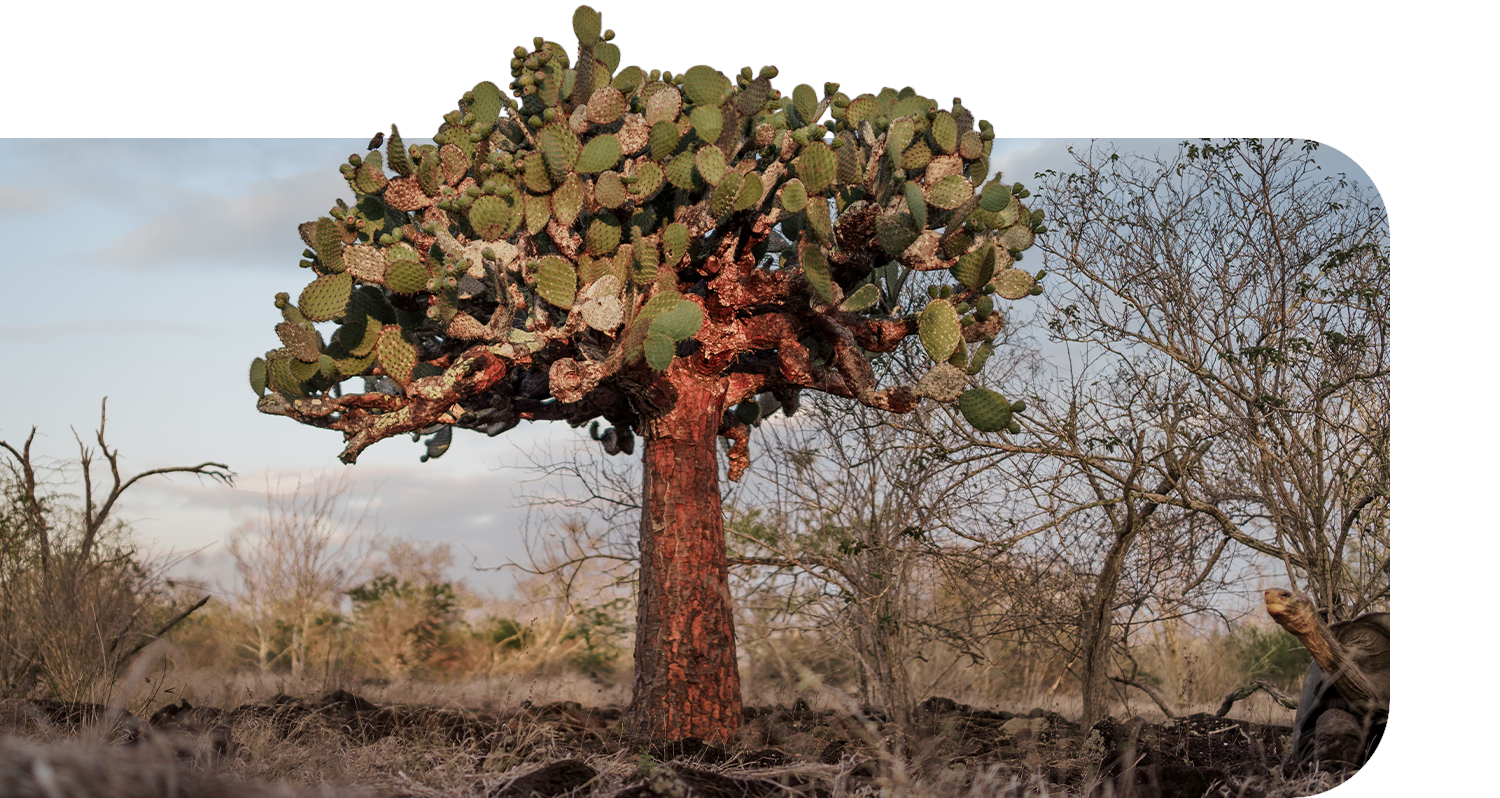
Galapagos prickly pear cactus is considered a keystone species because it serves as the primary food source for giant tortoises and land iguanas, contributing to the islands’ ecological balance. It also provides food, shade, and nesting structures for other wildlife. We restore their populations across the archipelago and seek to enhance the conservation process of the Galapagos ecosystems by using ecological restoration tools.
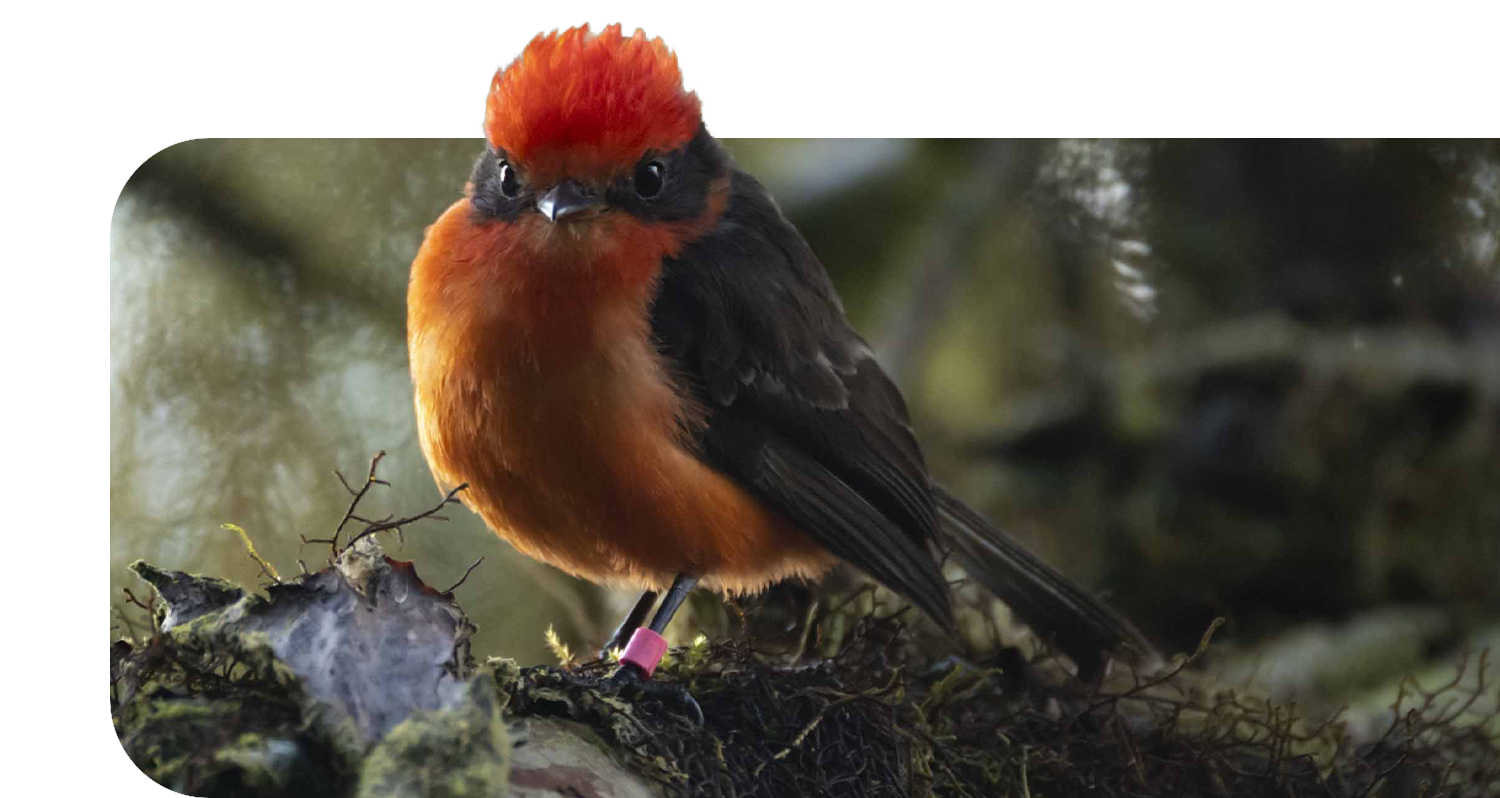
First discovered in Galapagos during Charles Darwin’s voyage on HMS Beagle, the Little Vermilion Flycatcher is endemic to the Galapagos, which means that it is found nowhere else in the world. Males are brightly colored and are one of the favorite sightings for many visitors to the Galapagos Islands, if lucky.
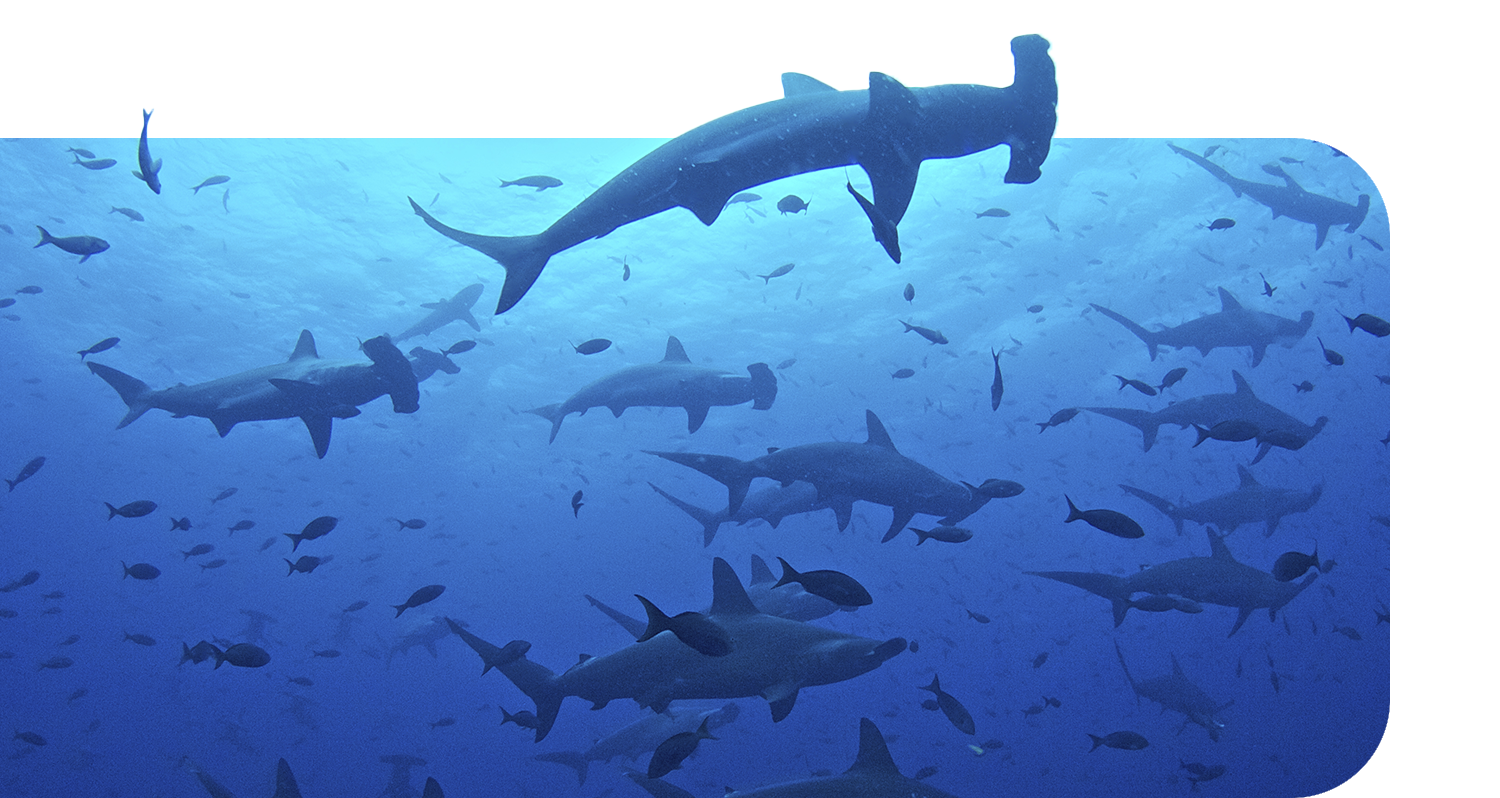
The scalloped hammerhead shark is one of the most iconic marine species of the Galapagos and the Galapagos Marine Reserve remains one of the best places in the world to see them. Scalloped hammerhead sharks live in warm temperate and tropical coastal waters of the Atlantic, Pacific, and Indian Oceans.
Most adults lead solitary lives but sometimes may be seen in pairs. However, in some parts of the world, including Darwin Island in the northern Galapagos, several hundred scalloped hammerheads come together to form large schools to migrate toward the poles over the summer.

The impact you make on this small ecosystem of enormous biodiversity is part of a larger footprint you are leaving for the world's future. Join us on our mission to safeguard one of our planet’s most important natural treasures through science and conservation action by making a donation today. Thank you for making an impact with us.